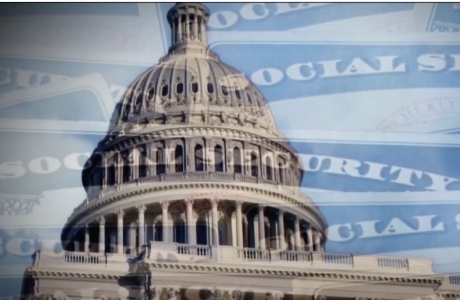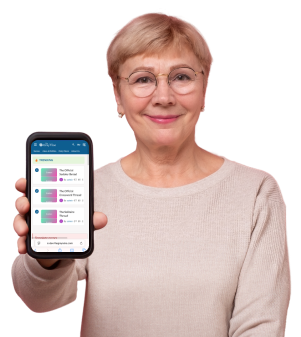Are you ready for the new rule changes? Here are the IDs you can use for Social Security!
By
Veronica E.
- Replies 0
Attention GrayViners, there’s an important change coming that could affect your Social Security benefits, and we want to make sure you're well-prepared.
Starting April 14, 2025, the Social Security Administration (SSA) will be rolling out updated identity verification procedures.
These changes are designed to protect your benefits from fraud, but they also come with new requirements.
While some may find these changes a bit overwhelming, don’t worry—we’re here to break it down for you so you can stay ahead of the curve.
The decision to tighten identity verification is in response to growing concerns about fraud, particularly when it comes to direct deposit changes and benefit claims.
According to Acting Commissioner of Social Security Lee Dudek, the SSA is focused on serving the country’s most vulnerable populations while ensuring the integrity of the Social Security system.
"We have heard from our customers, Congress, advocates, and others, and we are updating our policy to enhance customer service for the nation's most vulnerable populations," Dudek said in a statement released by the SSA.

Here’s what you need to know about these changes:
For those required to verify their identity in person, the SSA accepts several forms of identification.
The full list can be found in the SSA’s Program Operations Manual, but here’s a quick rundown of the key documents you’ll need:
Primary Identification Documents:
If you don’t have a primary ID, these secondary documents will also work:
Make sure that your documents are original, unexpired, and properly certified by the issuing agency in order to be accepted.
Source: YouTube / Click On Detroit | Local 4 | WDIV.
With the effective date set for April 14, 2025, now is the time to start preparing. Here’s what you can do:
Differing Opinions Emerge Over SSA’s New Verification System and Office Closures
These changes are part of broader efforts to improve government efficiency and prevent fraud.
The changes come as the Department of Government Efficiency (DOGE), led by Elon Musk, plans to close 47 Social Security field offices for cost-cutting and fraud prevention.
Frank Bisignano, a nominee to lead the SSA, defended the policy shift, saying it aimed to protect against fraud without affecting benefits.
On the other hand, Max Richtman, president and CEO of the National Committee to Preserve Social Security and Medicare, stated: "While it's good that a bad policy is being delayed and vulnerable groups are exempted, it's still bad policy. There was no reason to end phone verification, and limiting it creates unnecessary hurdles for seniors and families claiming benefits."
Dudek argued the new verification system was necessary, explaining: "For far too long, the agency has used antiquated methods for proving identity. Social Security can better protect Americans while expediting service."
At The GrayVine, we know how daunting changes like these can feel, especially when it concerns something as important as Social Security.
We're here to support you every step of the way, helping you navigate this transition with ease and making sure you're fully prepared.
Read next: Are social security cuts the start of bigger issues? The truth behind what’s happening

Have you already experienced issues with Social Security’s identity verification process? Do you have tips on how to prepare for the new requirements? We’d love to hear your thoughts and experiences in the comments below!
Starting April 14, 2025, the Social Security Administration (SSA) will be rolling out updated identity verification procedures.
These changes are designed to protect your benefits from fraud, but they also come with new requirements.
While some may find these changes a bit overwhelming, don’t worry—we’re here to break it down for you so you can stay ahead of the curve.
The decision to tighten identity verification is in response to growing concerns about fraud, particularly when it comes to direct deposit changes and benefit claims.
According to Acting Commissioner of Social Security Lee Dudek, the SSA is focused on serving the country’s most vulnerable populations while ensuring the integrity of the Social Security system.
"We have heard from our customers, Congress, advocates, and others, and we are updating our policy to enhance customer service for the nation's most vulnerable populations," Dudek said in a statement released by the SSA.

Social Security Administration updates its identity verification policy to improve security and customer service for vulnerable populations. Image Source: YouTube / Click On Detroit | Local 4 | WDIV.
Here’s what you need to know about these changes:
- If you're applying for Social Security Disability Insurance (SSDI), Medicare, or Supplemental Security Income (SSI), and you can’t verify your identity online, you'll be able to complete your claims by phone, without the need to visit an office.
- However, those applying for retirement, survivor, or auxiliary benefits (such as for a spouse or child) will need to verify their identity in person if they’re unable to use the online portal.
What ID Will You Need?
For those required to verify their identity in person, the SSA accepts several forms of identification.
The full list can be found in the SSA’s Program Operations Manual, but here’s a quick rundown of the key documents you’ll need:
Primary Identification Documents:
- Unexpired US driver’s license
- Unexpired state-issued non-driver ID card
- Unexpired US passport or passport card
- Form I-551 (permanent resident card)
- Form I-94 with unexpired foreign passport
- Form I-766 (employment authorization document)
- Form I-872 (American Indian card, Texas Band of Kickapoos only)
If you don’t have a primary ID, these secondary documents will also work:
- US military ID (active duty, retiree, National Guard, or dependent)
- Certificate of Naturalization or US Citizenship
- Government or non-government employee ID with name and photo or date of birth
- Certified medical record showing name and DOB
- Health insurance or Medicaid card with name and photo, age, or DOB (not Medicare cards)
- School ID, transcript, or certified school record with identifying details
- Life insurance policy listing name and DOB
- Religious or tribal documents that meet SSA standards
Make sure that your documents are original, unexpired, and properly certified by the issuing agency in order to be accepted.
Source: YouTube / Click On Detroit | Local 4 | WDIV.
Also read: Check your mailbox—Millions to see a Social Security increase
How to Prepare for the Changes
With the effective date set for April 14, 2025, now is the time to start preparing. Here’s what you can do:
- Review the list of acceptable IDs and ensure you have at least one primary document or two secondary documents.
- If you’re unable to use the SSA’s online portal, call 1-800-772-1213 to schedule an in-person appointment.
- Keep in mind that the SSA will make exceptions in extreme cases, such as for terminal illnesses or in prisoner pre-release scenarios.
Differing Opinions Emerge Over SSA’s New Verification System and Office Closures
These changes are part of broader efforts to improve government efficiency and prevent fraud.
The changes come as the Department of Government Efficiency (DOGE), led by Elon Musk, plans to close 47 Social Security field offices for cost-cutting and fraud prevention.
Frank Bisignano, a nominee to lead the SSA, defended the policy shift, saying it aimed to protect against fraud without affecting benefits.
On the other hand, Max Richtman, president and CEO of the National Committee to Preserve Social Security and Medicare, stated: "While it's good that a bad policy is being delayed and vulnerable groups are exempted, it's still bad policy. There was no reason to end phone verification, and limiting it creates unnecessary hurdles for seniors and families claiming benefits."
Dudek argued the new verification system was necessary, explaining: "For far too long, the agency has used antiquated methods for proving identity. Social Security can better protect Americans while expediting service."
At The GrayVine, we know how daunting changes like these can feel, especially when it concerns something as important as Social Security.
We're here to support you every step of the way, helping you navigate this transition with ease and making sure you're fully prepared.
Read next: Are social security cuts the start of bigger issues? The truth behind what’s happening
Key Takeaways
- The Social Security Administration (SSA) is revising identity verification procedures, with the new rules now set to take effect on April 14, 2025, after widespread criticism.
- Those applying for Social Security Disability Insurance, Medicare, or Supplemental Security Income can complete their claims by phone if they are unable to verify their identity online, while claims for retirement, survivor, or auxiliary benefits require in-person verification.
- The SSA will accept a range of documents for in-person identity verification, including unexpired state or government IDs, passports, and various secondary documents if primary IDs are not available.
- Delays in the implementation of the new procedures have been made to provide better customer service, allow SSA employees to receive necessary training, and address concerns raised by advocacy groups and lawmakers regarding access for vulnerable populations.
Have you already experienced issues with Social Security’s identity verification process? Do you have tips on how to prepare for the new requirements? We’d love to hear your thoughts and experiences in the comments below!






